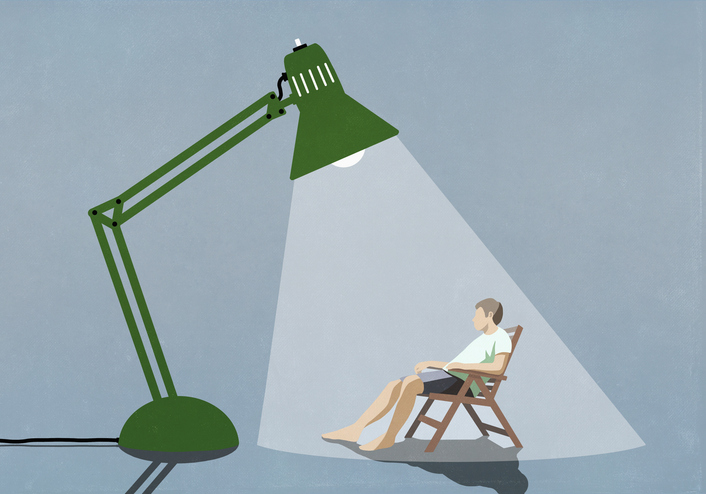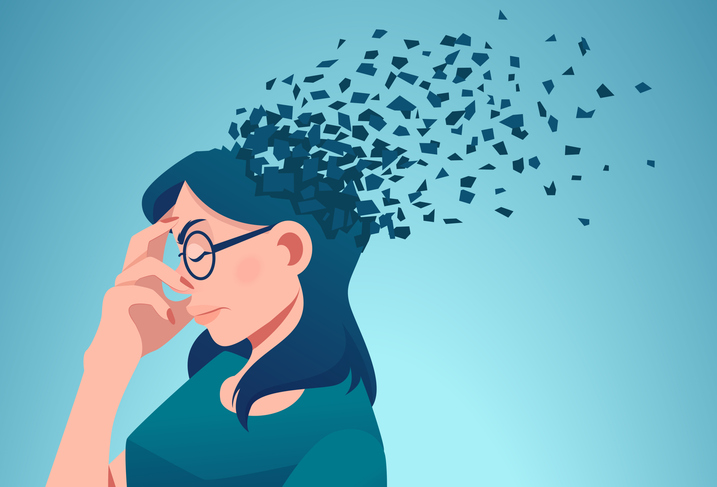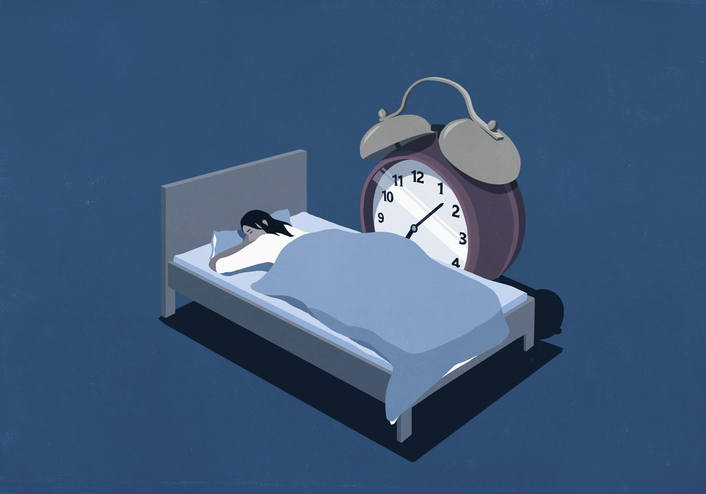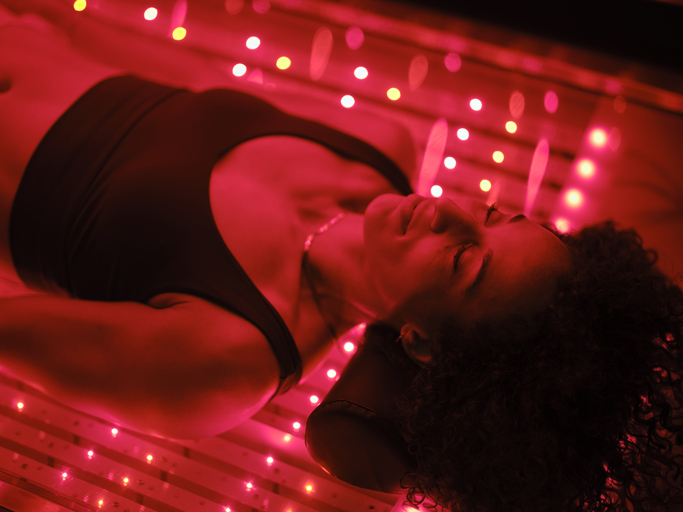Bright Light Therapy May Help Diminish Multiple Sclerosis Fatigue

By Joy Stephenson-Laws, J.D., Founder
In recent years, movie stars Selma Blair and Christina Applegate have brought a lot of attention to the disease of multiple sclerosis (MS). MS is a chronic, usually progressive, autoimmune disease of the central nervous system. It is an inflammatory disease that causes the immune system to attack healthy tissue. It affects the brain, spinal cord and optic nerves. The disease may cause lesions on the brain and spinal cord.
Symptoms of MS may include muscle weakness or spasms, which can cause you to drop things or fall, vision problems, eye pain and odd eye movements, dizziness, problems controlling your bowels or bladder, sensitivity to heat, trouble thinking clearly and more.
“With the disease of MS, it’s never a good day,” Applegate said, according to a report from NBC’s TODAY. She disclosed her MS diagnosis in 2021.
“There are just certain things that people take for granted in their lives that I took for granted. Going down the stairs, carrying things — you can’t do that anymore. It f------ sucks. I can still drive my car short distances. I can bring up food to my kid. Up, never down.”
Selma Blair shared that she had MS back in 2018 and in 2019 walked the Oscars red carpet with a cane to cope with her symptoms and disabilities that MS caused. Blair’s MS went into remission in 2021, but that doesn’t mean she still isn’t fighting.
"I still get tired. I still am stiff all the time,” she said, according to another report from NBC’s TODAY.

“Fatigue is considered to be one of the main causes of impaired quality of life among MS patients, independent of depression or disability. Fatigue is also among the most common symptoms, reported by at least 75% of MS patients at some point in the disease course,” reports the National Institutes of Health (NIH).
“For many, fatigue is considered to be the single most debilitating symptom, surpassing pain and even physical disability. Fatigue also imposes significant socioeconomic consequences, including loss of work hours and in some instances, loss of employment.”
Light therapy (also called phototherapy or bright light therapy) may be key in addressing MS fatigue.
A recent study found evidence suggesting that MS patients had less fatigue after just two weeks of undergoing light therapy. The light therapy recipients specifically experienced “less daytime sleepiness” compared to the control group, according to this Medical Xpress report that discusses the study. They also exhibited “improved physical and mental performance.”
I am honestly not shocked by these results. I recently discussed in this pH blog how light therapy may help Alzheimer’s patients. Researchers of a study in China observed that administering light therapy to Alzheimer’s patients appeared to improve sleep efficiency (time spent asleep while in bed), reduce agitation and even help with depression. Although Alzheimer’s and multiple sclerosis are two very different issues, light therapy may provide relief for both and perhaps that is due to bright light therapy’s effect on the circadian rhythm.
“Circadian rhythms are physical, mental, and behavioral changes that follow a daily cycle. They respond primarily to light and darkness in an organism's environment. Sleeping at night and being awake during the day is an example of a light-related circadian rhythm,” according to the National Institutes for Health (NIH).
Circadian rhythms may influence hormone release, eating habits and digestion, body temperature and other important bodily functions.

It is known that Alzheimer’s and dementia in general can disrupt the circadian rhythm, causing sleep issues.
“Bright light therapy has been found to be beneficial as a treatment for these sleep disturbances. It is believed to work by helping to regulate the circadian rhythm,” according to the Alzheimer’s Society.
“In bright light therapy, a person sits in front of a light box that provides about 30 times more light than the average office light, for a set amount of time each day.”
In the study with the MS patients, the ones treated with light therapy were exposed to a daylight lamp with a brightness of 10,000 lux. Lux is a unit of illuminance. 10,000 lux is the general recommended amount for effective light therapy. To give a bit more perspective, “Typical outdoor lux levels can range from less than 1/1,000 lux on a dark night to more than 30,000 lux in direct sunlight!” (Scientific American). The average office light has about 500 to 1,000 lux.
“There is growing evidence that MS is associated with a disruption of circadian rhythms…,” according to Acta Physiologica, peer-reviewed scientific journal.
“However, our understanding of the impact of circadian rhythms on MS remains vague. Furthermore, it is unclear whether circadian disruption and fatigue associated with sleep disturbances in MS are a consequence of MS-related inflammation and neurodegeneration; or, instead, whether circadian disruption is an actual cause for developing MS (chicken or egg).”
This is interesting and important, because if in fact circadian disruption is a cause for developing MS, then we all want to be very proactive in keeping our circadian rhythms regulated.
Red and infrared light is my light therapy of choice.MS discussion aside, I highly recommend that everyone consider red light therapy. Red light therapy (RLT) is a form of low-level laser (light) therapy (LLLT) and is offered in many medical office settings. Think of it as like a healthy tanning bed. During a session, the light delivers wavelengths of natural red and near infrared light. It’s like the wavelengths you get from sunlight without the harmful UV rays. RLT is reported to improve the appearance of skin and promote healing. It is also able to stimulate bone growth and recovery as well as soft tissue repair. It is so powerful and effective that NASA used RLT to keep astronauts healthy while in space. As far as red light therapy and sleep are concerned, studies have suggested that RLT increases serum melatonin and improves sleep quality.

To get a bit more “sciencey” when it comes to understanding why red light therapy is so effective, check out this video where a human biologist discusses the benefits of red light therapy.
Red light has shown that it greatly helps with mitochondrial function. Almost every cell in our bodies has several thousand mitochondria. Often called the cell’s powerhouse, they process oxygen and help convert food into energy. More specifically, mitochondria help metabolize and break down carbohydrates and fatty acids. They make 90 percent of the energy our bodies need to function properly. So to say that they have an important job in keeping us healthy is an understatement. Essentially, red light increases the amount of energy in the cells by increasing mitochondria’s utilization of oxygen.
According to Science Direct, exposure to "red or near-infrared (NIR) light in low level light therapy (LLLT) is found to stimulate cellular processes and bioenergetics, resulting in enhanced wound healing, pain control, neurodegenerative diseases treatment, etc.”
Multiple sclerosis is a neurodegenerative disease, so red light therapy may be something to consider for MS patients per approval from their doctor.
We can all benefit from light therapy, especially red light therapy. I can attest that it has helped me in many ways.
(Give Your Hair Some Much Needed TLC With Red Light Therapy)
To learn more about red light therapy and book an appointment for treatment, click here if you are in San Diego and here if you are in the Los Angeles area. For more information on multiple sclerosis as it pertains to nutrition, check out these pH blogs:
- A Hot Idea to Reduce Your Risk for Multiple Sclerosis
- Will Eating Red Meat Once a Day Help Keep Multiple Sclerosis Away?
Enjoy your healthy life!
Disclaimer: This article is not intended to provide medical advice. Please consult with your doctor or another competent healthcare practitioner to get specific medical advice for your situation.
The pH professional health care team includes recognized experts from a variety of health care and related disciplines, including physicians, attorneys, nutritionists, nurses, and certified fitness instructors. This team also includes the members of the pH Medical Advisory Board, which constantly monitors all pH programs, products, and services. To learn more about the pH Medical Advisory Board, click here.







